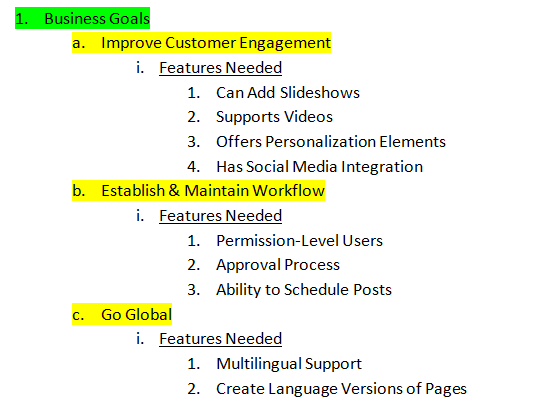How to Choose a Content Management System

Selecting a content management system (CMS) is one of the most important decisions enterprises make, as it enables an entire workforce to produce, edit and publish content - a key component of success on today's Web.
For many companies, business operations start and end within their CMS but deciding which to choose is difficult, because of the countless options available to them. Should an Internet retailer choose an ecommerce platform with integrated CMS features like Shopify or go with one that is more fully integrated like NetSuite? Perhaps, what they need is an open-source solution like WordPress. The answer is, of course, different for every 'Net enterprise but regardless of size or vertical, there are three considerations/steps to make/take.
What Are Your Goals?
Similar to any buying process, companies must determine what they want their content management systems to do. Decision-makers should make a list of 5-10 goals a CMS should help them accomplish and compare their lists to their colleagues' and negotiate until there is a list of 5-10 priorities that everyone can agree on. As long as the list is appropriate, any CMS that will not help a company accomplish these set goals should not be considered.
Examples of goals can include: increase customer engagement, improve ease-of-use for employees, expand globally, establish internal workflow, provide a responsive Web design experience for end-users, improve product pages, etc.
How Will a CMS Help You Get There?
Once goal-setting is complete, decision-makers will need to determine what features will actually help them accomplish their goals. For example, a company looking to expand into new countries will need a CMS that offers multilingual support. In a white paper on the subject, EPiServer wrote that a company with a global presence must have a CMS system that has robust multilingual support that facilitates automatic rendering of pages based on the URL, the language specified by the user or the language detected from the user's browser settings.
Additionally, if one of the company's top priorities is to establish and maintain a workflow, its CMS should include permissions, scheduling capabilities and an overarching approval process. Lastly, someone whose goal is to improve customer engagement will likely want a CMS that supports visual elements like slideshows or videos, as well as offers personalization and social media integration.

What Vendor Should I Choose?
There are many considerations when it comes to selecting a vendor, like the amount of support an enterprise will need or what vendors support its goals and offers the features needed to accomplish those goals, but one of the key elements of selection success is to be proactive from the beginning. Web workers should not only have their must-have goals and features list in hand but also come up with a variety of usage scenarios to see if a CMS solution will match their needs.
Albeit very boring and time consuming, everyone involved in the CMS-selection process should participate in product demos and be very active in asking questions and demanding answers to those questions from the vendor's sales rep. Additionally, once a short list of providers has been created, decision-makers should invite members of their team who will be using the CMS every day to take place in a product demo and ask questions they may have. After all, they are likely the ones whose implementation of the product will yield a return on investment.










